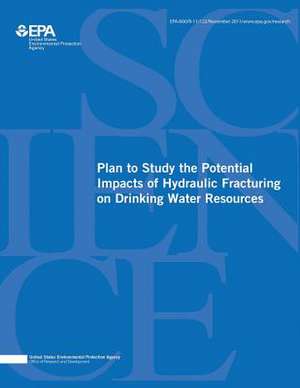Plan to Study the Potential Impacts of Hydraulic Fracturing on Drinking Water Resources
Autor U. S. Environmental Protection Agencyen Limba Engleză Paperback
Preț: 162.88 lei
Nou
Puncte Express: 244
Preț estimativ în valută:
31.17€ • 32.54$ • 25.79£
31.17€ • 32.54$ • 25.79£
Carte disponibilă
Livrare economică 14-28 martie
Preluare comenzi: 021 569.72.76
Specificații
ISBN-13: 9781507587553
ISBN-10: 1507587554
Pagini: 190
Dimensiuni: 216 x 279 x 10 mm
Greutate: 0.45 kg
Editura: CREATESPACE
ISBN-10: 1507587554
Pagini: 190
Dimensiuni: 216 x 279 x 10 mm
Greutate: 0.45 kg
Editura: CREATESPACE
